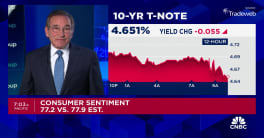After looking at housing booms and busts in 20 countries, three economists have concluded that the likelihood of a boom ended in a housing market cycle depends on its age - that is that the longer the cycle continues, the probability that it will end increases (positive duration dependence). They did not find the same was true of housing busts.
The three, Luca Agnello of the University of Palermo, Vitor Castro, University of Coimbra (Portugal), and Ricardo M.Sousa University of Minho, (Portugal) and London School of Economic, were prompted to do their study by the prolonged housing bubble following the dot-com bust in the early 2000s followed by the recent housing crisis.
Their article, Booms, Busts, and Normal Times in the Housing Market, notes that against the background of the subprime boom, and subsequent Great Recession and long and persistent slump in the housing market, it became a policymaking priority to investigate the determinants of this boom-bust behavior.
Research done in 2011 and 2013 indicated that while housing busts showed no evidence of positive duration experience it did seems that there was lagged duration dependence - that is housing downturns are less likely to end when the preceding upturn was abnormally long.
The research, published in the American Statistical Association Journal of Business and Economic Statistics, sought to answer these questions:
- How long are housing booms, business and normal times likely to last?
- How similar or different are these phases in European and non-European countries?
- Does the end of a boom or bust depend on its own age?
- Is the duration of each cycle smooth or bumpy?
- Has the duration of market cycles changed over time?
The authors first identified the various stages of housing market cycles then looked at data for 20 industrialized countries spanning a period from the first quarter of 1970 to the second quarter of 2012, and constructing a continuous time Weibull model. They found that the likelihood of both booms and busts and to some extent normal cycles coming to an end increases over time and that each tends to be longer than the previous phase of the cycle, no matter its type. They also found that the duration of the different stages of the housing markets has increased over recent decades.
Looking at differences between European and non-European countries including the U.S. they found housing booms to be broadly similar in terms of length but the busts to be shorter in European countries. There was also a positive duration dependence in booms of both European and non-European countries but housing busts in non-European countries do not seem to be duration dependent.
They also corroborated the existence of time-varying duration dependence for booms and busts. "In particular, we find the housing boom and busts that last less than 26 quarters display (positive) duration dependence, but the same does not hold for older events." When booms or busts) have a duration shorter than 26 quarters each additional quarter on average increases the likelihood of the end of the stage by 4.01percentage points in booms and 7.01 percentage points in busts. In contrast, in those longer than 26 quarters each additional quarter raises the likelihood of their end by only 1.76 (boom) and 3.68 (bust) percentage points.
The authors say that from a policy perspective the study provides information that can be useful for predicting the timing and length of boom-bust cycles and thus in designing and implementing stabilizing policies. Moreover, by looking at the stages of housing cycles across groups of countries it contributes to a better understanding of the degree of synchronization of housing prices globally.
While they stress they cannot draw predictions and policy implications for specific countries their key finding is that, while relatively short-lived housing booms tend to deflate, more prolonged booms are likely to spiral out of control and longer term busts when compared to shorter ones are more likely to turn into chronic slumps and lead to severe recessions.
The authors conclude that the time-varying nature of housing cycles provides a rational for preventive policy interventions during booms and busts. "In particular given that the duration of housing boom and housing bust episodes is conditional on their own age, a timely policy response to such events is crucial to keep them under control." They say that a counter-cyclical policy intervention that takes place before that 26 quarter mark is key to smoothing out large and persistent price swings and speeding up the return to a normal phase. When booms and busts get too long, the likelihood of their end increases by only half when compared to shorter events making it more difficult to circumvent such episodes without avoiding financial distress and crisis management. "For this reason, a 'wait-and-see' strategy is not recommended for housing booms and housing busts lasting less than 26 quarters"







